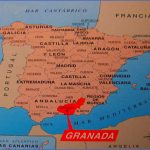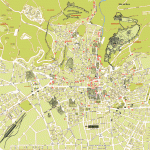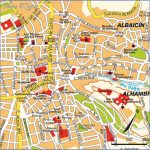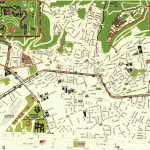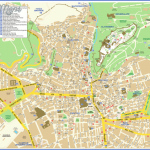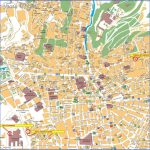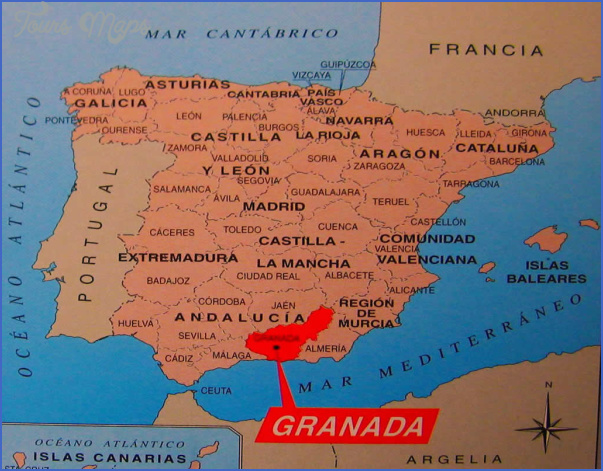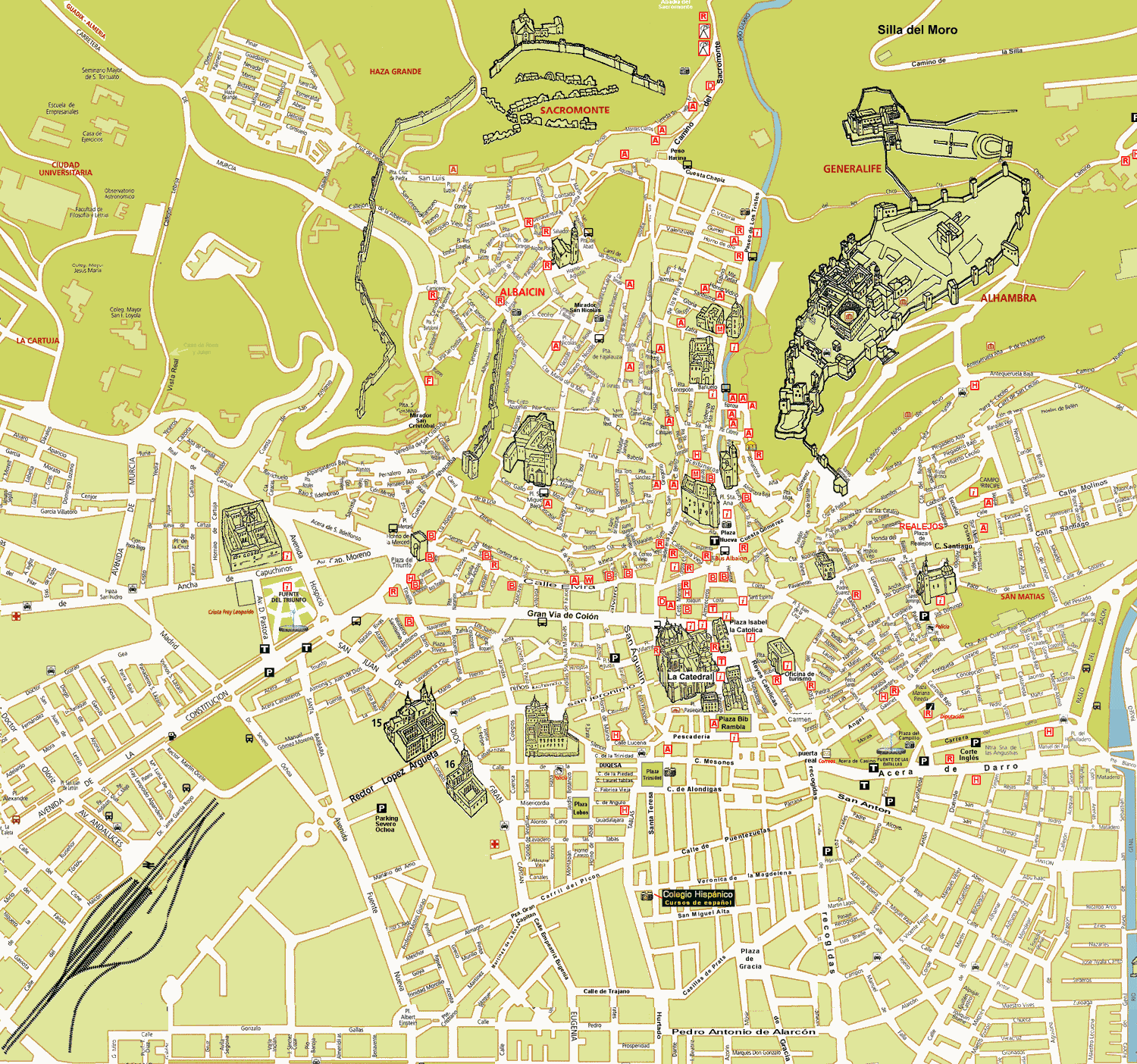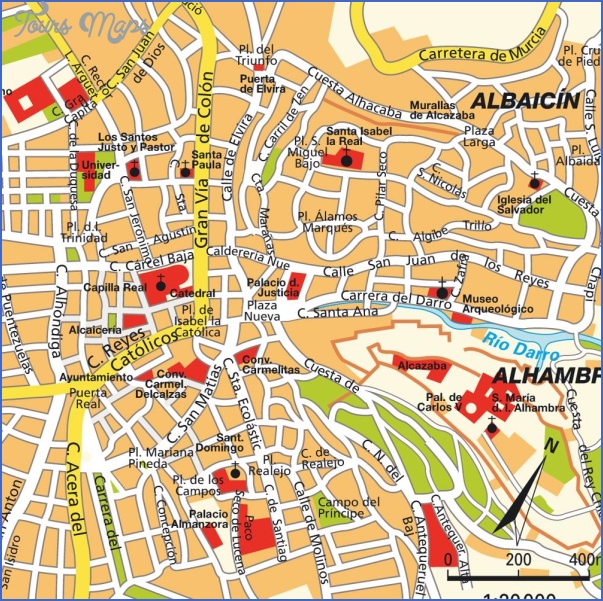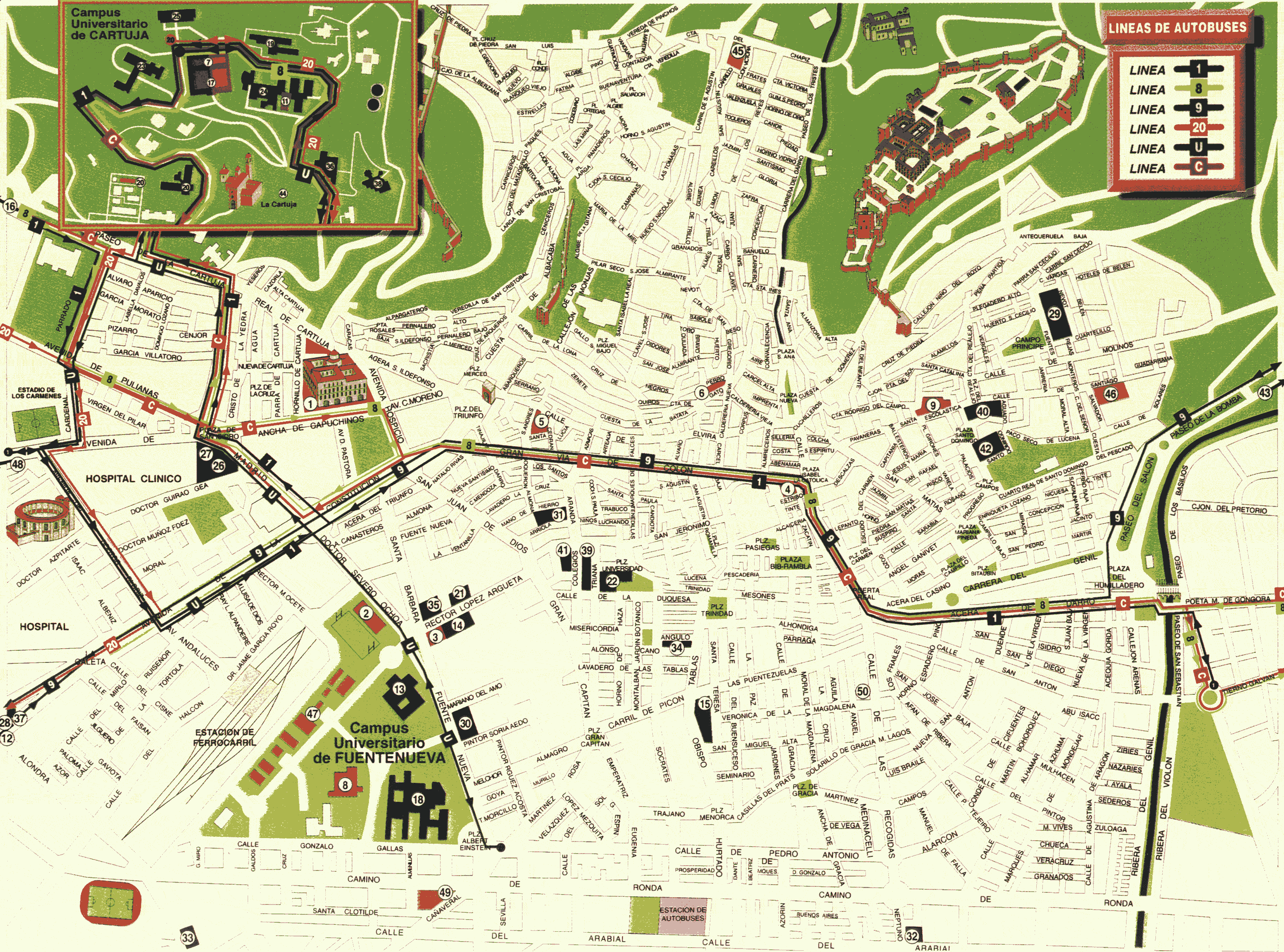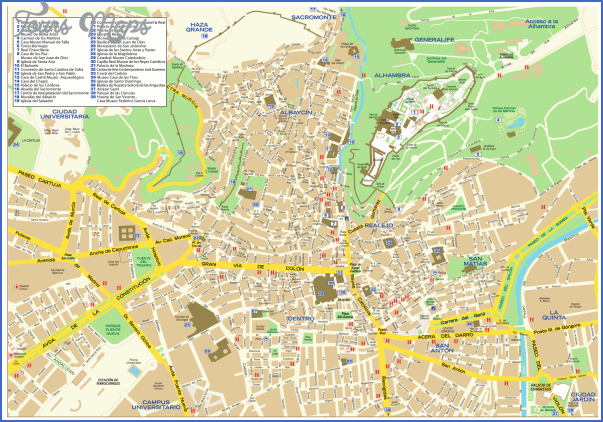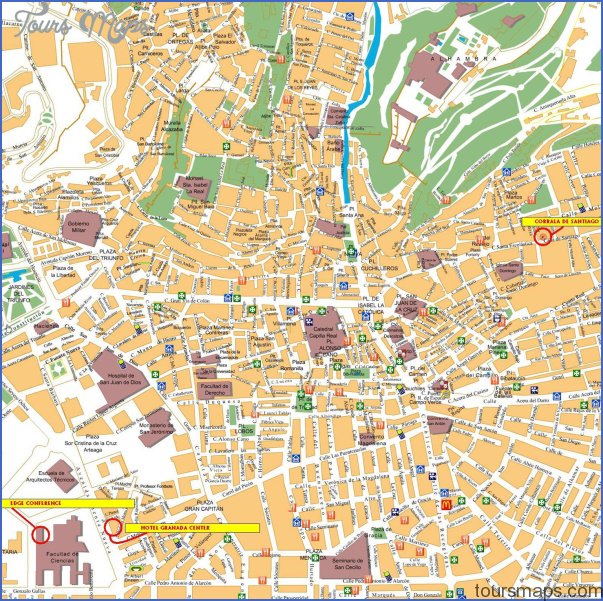Granada Map
EL GENERALIFE. Over a bridge, across the Callejon de los Cipreses and the shady Callejon de las Adelfas, are the vibrant blossoms, towering cypresses, and streaming waterways of El Generalife, the sultan’s vacation retreat. In 1313 Arab engineers changed the Darro’s flow by 18km and employed dams and channels to prepare the soil for Aben Walid Ismail’s design of El Generalife. Over the centuries, the estate passed through private hands until it was finally repatriated in 1931. The two buildings of El Generalife, the Palacio and the Sala Regia, connect across the Patio de la Acequia (Courtyard of the Irrigation Channel), embellished with a narrow pool fed by fountains that form an aquatic archway. Honeysuckle vines scale the back wall, and shady benches invite long rests. An old oak tree stands here at the place where the sultana Zorahayda apparently had several amorous encounters with a nobleman from the Abencerrajes tribe.
PALACIO DE CARLOS V. After the Reconquista drove the Moors from Spain, Ferdinand and Isabella restored the Alcazar. Little did they know that two generations later Emperor Charles V would demolish part of it to make way for his Palacio, a Renaissance masterpiece by Pedro Machuca (a disciple of Michelangelo). Although it is incongruous with the surrounding Moorish splendor, scholars concede that the palace is one of the most beautiful Renaissance buildings in Spain. A square building with a circular inner courtyard wrapped in two stories of Doric colonnades, it is Machuca’s only surviving design. Inside, the small but impressive Museo de La Alhambra contains the only original furnishings remaining from the Alhambra. (s958 22 62 79. Open Tu-Sa 9am-2:30pm. Free.) Upstairs, the Museo de Bellas Artes displays religious sculptures and paintings of the Granada School dating from the 16th century to the present, (n 958 22 48 43. Open Apr.-Sept. Tu 2:30-6pm, W-Sa 9am-6pm, Su 9am-2:30pm; Oct.-Mar. Tu 2:30-7:45pm, W-Sa 9am-7:45pm, Su 9am-2:30pm. ‚1.50.)
CAPILLA REAL. Downhill from the Alhambra’s Arab splendor, through the Pta. Real off Gran Via de Colon, on C. Oficios, the Capilla Real (Royal Chapel), Ferdinand and Isabella’s private chapel, exemplifies Christian Granada. During their
prosperous reign, the Catholic Monarchs funneled almost a quarter of the royal income into the chapel’s construction (which lasted from 1504 to 1521) to build a proper burial place. Their efforts did not go unrewarded; intricate Gothic masonry and meticulously rendered figurines, as well as La Reja, the gilded iron grille of Master Bartolome, grace the couple’s resting place. Behind La Reja lie the almost lifelike marble figures of the royals themselves. Ferdinand and Isabella are on the right, when facing the altar; beside them sleeps their daughter Juana la Loca (the Mad) and her husband Felipe el Hermoso (the Fair). Much to the horror of the rest of the royal family, Juana insisted on keeping the body of her husband with her for an unpleasantly long time after he died. The lead caskets, where all four monarchs were laid to rest, lie directly below the marble sarcophagi in a ciypt down a small stairway on the left. The smaller, fifth coffin belongs to the hastily buried child-king of Portugal, Miguel, whose death allowed Charles V to ascend the throne. ( 958 22 92 39. Open M-Sa 10:30am-lpm and 4-7pm, Su llam-lpm and 4-5pm-, ‚2.50.)
SACRISTY. Next door in the sacristy, Isabel’s private art collection, the highlight of the chapel, favors Flemish and German artists of the 15th century. The glittering royal jewels the queen’s golden crown and scepter and the king’s sword shine in the middle of the sacristy. Nearby are the Christian banners which first fluttered in triumph over the Alhambra. (s958 22 92 39. Open M-Sa 10:30am-lpm and 4-7pm, Su llam-lpm and 4-5pm\ ‚2.50. Free with admission to Capilla Real.)
CATHEDRAL. Behind the Capilla Real and the sacristy is Granada’s cathedral. Construction of the cathedral began after la Reconquista upon the smoldering embers of Granada’s largest mosque and was not completed until 1704. The first purely Renaissance cathedral in Spain, its massive Corinthian pillars support a 45m vaulted nave, (is 958 22 29 59. Open Apr.-Sept. M-Sa 10:45am-l:30pm and 4-7pm, Su 47pm; Oct.-Mar. M-Sa 10:30am-l:30pm and 3:30-6:30pm, Su llam-l:30pm. ‚2.50.)
II THE ALBAIClN. A labyrinth of steep streets and narrow alleys, the Albaici’n was the only Moorish neighborhood to escape the torches of the Reconquista and remains a key stop in Granada. After the fall of the Alhambra, a small Muslim population remained here until being expelled in the 17th century. Today, with its abundance of North African cuisine, outdoor bazaars blasting Arabic music, teahouses, and the presence of a mosque near PI. San Nicolas, the Alba-ici’n attests to the persistence of Islamic influence in Andalucia. Spectacular sunsets over the surrounding mountains can be seen from C. Cruz de Quiros, above C. Elvira. Although generally safe, the Albaici’n is disorienting and should be approached with caution at night. (Bus #12 runs from beside the cathedral to C. Pag&s at the top of the Albaici’n.)
The best way to explore this maze is to proceed along Carrera del Darro off PI. Santa Ana, climb the Cuesta del Chapiz on the left, then wander through Muslim ramparts, cisterns, and gates. On PI. Santa Ana, the 16th-century Real Cancilleria (or Audiencia), with its beautiful arcaded patio and stalactite ceiling, was the Christians’ Ayuntamiento. Farther uphill are the 11th-century Arab baths. (Carrera del Darro 31. s958 02 78 00. Open Tu-Sa 10am-2pm. Free.) The Museo Arqueologico showcases funerary urns, classical sculpture, Carthaginian vases, Muslim lamps, and beautiful ceramics. (Carrera del Darro 41. 958 22 56 40. Open Tu
3-8pm, W-Sa 9am-8pm, Su 9am-2:30pm. ‚1.50. EU members free.) The Eimirador (lookout terrace) adjacent to Iglesia de San Nicolas in the heart of the Albaici’n affords the city’s best view of the Alhambra, especially in winter when snow adorns the Sierra Nevada behind it. From C. Elvira, go up C. Caldereria Nueva to C. San Gregorio and continue uphill on this street past PI. Algibe Trillo, where it becomes Cta. Algibe de Trillo. At PI. Camino, make a left on Cta. Tomasa and another left on Atarazana Cta. Cabras. The mirador will be on your right.
Granada Map Photo Gallery
Maybe You Like Them Too
- Explore Southgate, Michigan with this detailed map
- Explore Les Accates, France with this Detailed Map
- Explore Góra Kalwaria, Poland with this detailed map
- Explore Gumdag, Turkmenistan with this detailed map
- Explore Telfes im Stubai, Austria with this detailed map

